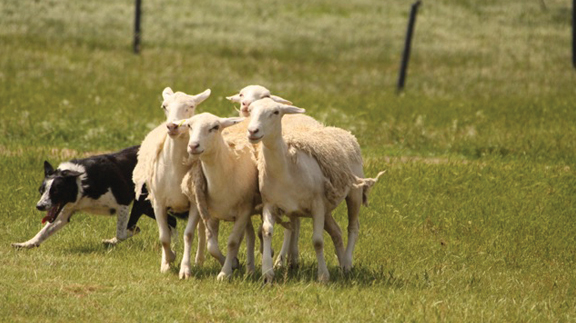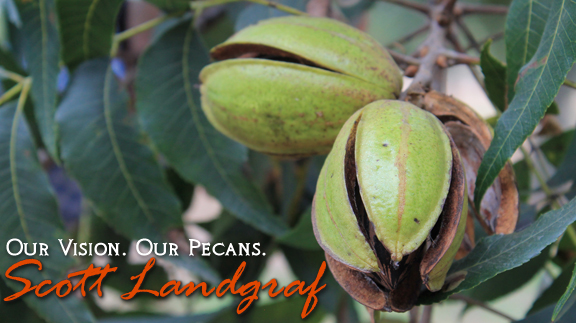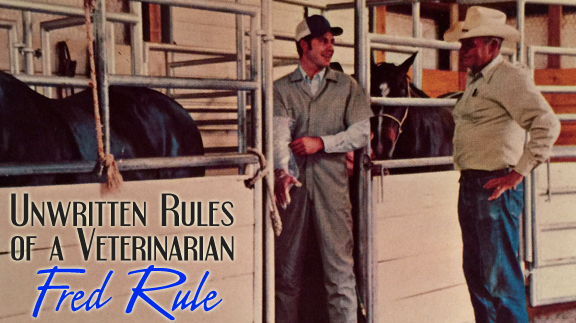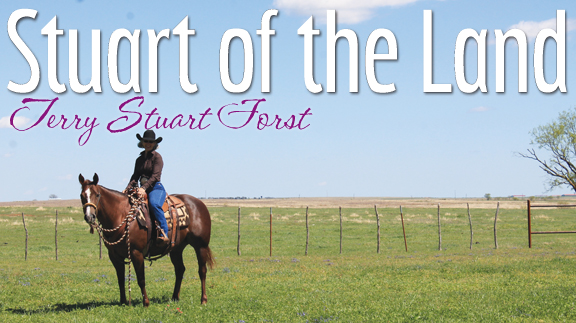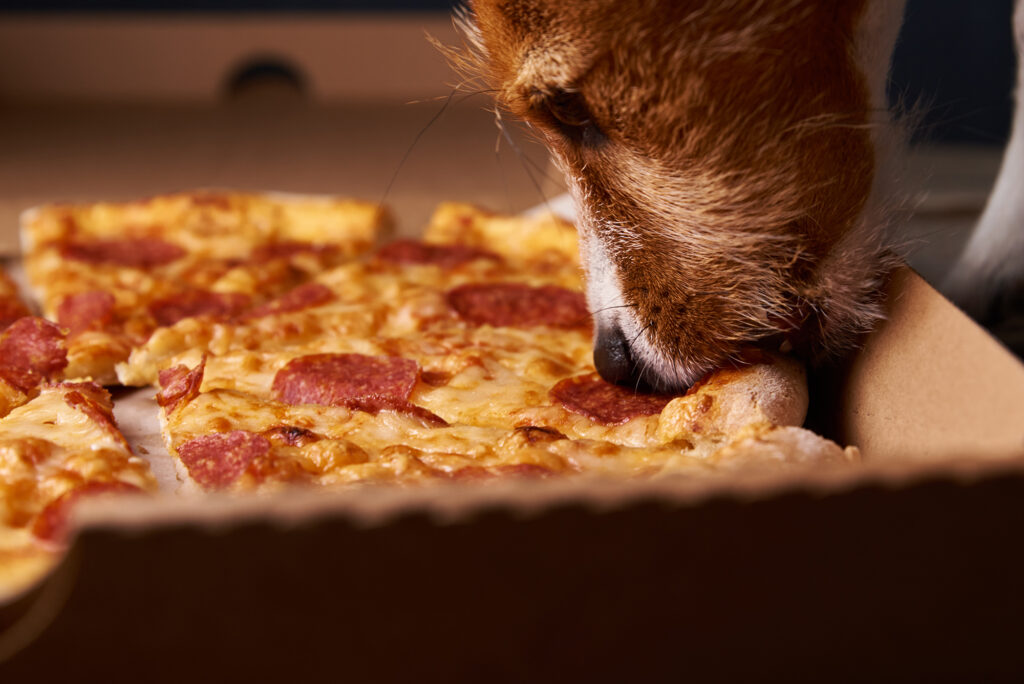Country Lifestyle
December 2017 Profile: John Jennings
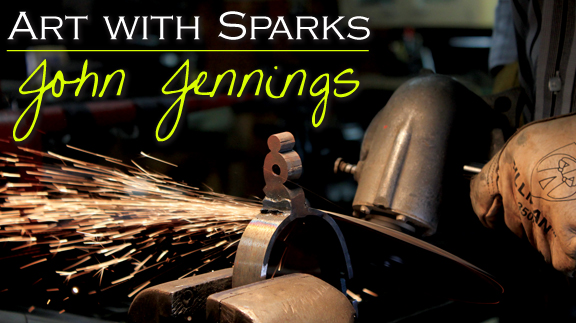
By Laci Jones
Raised under the city lights of California, John Jennings is not your typical Californian. Born in El Centro, Calif., Jennings considered himself a “redneck,” spending many days hunting and fishing on the many California golf courses in Palm Springs, Calif.
“I would get kicked out of golf courses,” he said followed by a chuckle. “The security guards would run us off, and we would go to a different one.”
He was always “tinkering” with knives, guns and other items. Jennings recalled using circular saws as a child, saying it was “second nature.” At 17 years old, he dropped out of high school and began working full-time. Like his father, Jennings worked in construction.
“I was making $500 per week 30 years ago, which was pretty good money,” Jennings explained. “I moved out to my own apartment and just started doing my thing. Looking back, I wish I had gone to school because my son’s going to Oklahoma Baptist University, and he’s got so many opportunities.”
Jennings “bounced around” from job to job, never working at the same place for more than 18 months. His career took a backseat when he was diagnosed with Idiopathic thrombocytopenic purpura in his mid-20s. ITP is an auto-immune disease where the immune system sees blood platelets as foreign object.
“We were fixing to deer hunt out in the desert,” Jennings began. “I had these big ole bruises, and I didn’t think much of it.”
Jennings chalked the bruises up to clumsiness, but his wife suggested he visit the doctor to be sure. After his results came in, his doctor told him he needed to stay home, but Jennings was in denial.
“I felt 100 percent perfect. There’s nothing wrong with me,” he said. “I said, ‘No, I’m going deer hunting.’” They said, “Well, go ahead, but even a jar against a seatbelt could kill you.”
Jennings underwent many surgeries and chemotherapy treatments as well as took a daily concoction of pills to cure ITP. One chemotherapy treatment increased his appetite, causing his weight to rise to 250 pounds.
“I did this for like three years, and it finally just went away,” Jennings added. “By the grace of God, it went away.”
The southern California native said the experience changed his outlook on life. Ten years ago, Jennings and his family moved to Shawnee, Okla. He said the expense, traffic, regulations and the mounting doctor bills as well as his parents’ influenced his decision to relocate to the Sooner state.
“My parents wanted out of California 30 years ago, so they headed east on I-40 to look around,” he explained. “They originally were going to look in Arkansas, but they got stuck in a hail storm in Shawnee and stayed the night.”
Jennings said he lived in Shawnee, Okla., when he was eight years old, but moved back to California following the oil crash in the ‘80s. His parents later retired in Oklahoma.
“When I was kind of fed up with California too, my mom called and said, “There’s this really cute little house right across the street,” Jennings recalled. “It was a dump. My wife cried when she first saw it.”
Moving to Pottawatomie County allowed the California native to meet Bill Madole, a local bit and spur maker and neighbor of the Jennings family. Madole owned the land adjacent to Jennings, which overlooked the North Canadian River.
“[Madole] owns three corners of this river,” Jennings explained. “Once I found that out, I thought, “Man, I would like to hunt that.”
Jennings worked out a trade with the landowner for hunting privileges. The construction worker completed projects like fixing Madole’s roof or installing a new door. Jennings began watching Madole work and thought it would be “cool to try.”
Jennings was quickly discouraged once the talented blacksmith told him how much the equipment cost. After, he didn’t give spur making as a side-business another thought. Then things changed. Four years ago Madole was preparing to leave for the National Finals Rodeo where he had a booth.
“I said, ‘I’ll help you get ready for the NFR, and you show me how to make spurs,’” Jennings recalled. “He was sitting there, engraving while we were talking, and he said, ‘okay.’”
The apprentice was tasked with filing spur rowels, which he described as “monotonous” tasks. He continued to learn from the expert, copying his style of spur making.
“We do what is called ‘Texas-style spurs,’” Jennings explained. “The Texas-style is a bit more utilitarian than the Mexican or California-style spurs.”
The Mexican and California-style spurs are more ornate with more silverwork, and they have a larger rowel than the Texas-style, he added. The Texas-style is more subdued. Jennings said he did not experiment with other styles, contributing most of his influence from his teacher.
“I rely heavily on his style because, to me, that’s how it gets passed down,” he stated. “There’s a guy named Kevin Burns whose spurs are pretty expensive. He learned from a guy named Jerry Cates. If you look at a Burns spur, it looks a whole lot like Cates.”
Jennings said the same could be said of Billy Klapper, who learned from the “Godfather” of Texas-style spurs, Adolph Bayers.
“I remember I sold a couple pair to a guy in Stillwater, Okla., who was a trader,” he recalled. “He was carrying a pair of mine around a big spur show in Abilene, Texas. Another spur maker said, ‘Oh, you’ve got a pair of Madole spurs,’ and he said, ‘No, this is Jennings’ spurs, but he learned from Madole.’ This is how distinctive my buddy’s style is.”
He said the distinction of the spurs could be seen in the details. Many spur makers do not engrave in the steel, but Jennings and Madole make individual cuts in the steel to create a distinct design. Also, the area between the band and the shank is squared off, which requires more effort.
While he is inspired by Madole’s work, Jennings also has more resources available than his mentor had.
“I look all the time on the Internet, seeing what’s out there and getting ideas,” Jennings explained. “If [Madole] wanted to see spurs, he had to drive to Amarillo, Texas, to a show. I think it’s just easier for people to get started across the board nowadays.”
Jennings said he never thought he would pick up the art of spur making because his background did not include horsemanship. The spur maker sent a pair he was proud of to a friend, who took them to a horseman. The horseman complimented the spurs, and Jennings’ friend mentioned he does not ride horses. The horseman said, “Well, that’s kind of a fraud.”
“My take on it is the guy who builds NASCAR cars probably can’t drive them or a pilot does not work on the airplane that you’re flying across the country,” the spur maker explained. “A good horseman does not equate to being able to do silverwork and vice versa.”
Jennings said his first pair of spurs were “good” for a first pair, but overall, they are “okay.”
The spur maker has improved since then, stating a good set of spurs takes time and attention to detail. Lately, Jennings has been inspired by old-fashioned designs including the 100-year-old design, gal-leg spurs.
“The gal-leg spurs are a really old-fashioned patterned, but every guy has to draw his own,” he explained. “Every guy’s gal-leg spurs are a little bit different.”
On average, Jennings spends 20 to 100 hours on a pair of spurs. The process begins with design. His background in sculpting ceramics helped him become the spur maker he is today.
Jennings traces his new designs on paper, then copper before cutting it out. The design is traced on the steel, which is then cut with a bandsaw. Once the bands are cut, the spurs are placed in the forge until the metal is red-hot. They are then formed into the shape of a spur. Then the shank is welded to the band and filed to smooth out any indentions.
The design for the silver is planned, then cut with a small saw and soldered on the spur. Once the spur maker cleans the spur, it is ready for engraving.
“It’s like another well-known spur maker said, ‘You want to have a really nice, delicious cake,’” Jennings explained. “The metaphor is about having a real quality spur before you ever put silver or engraving on. The decoration is just that, the icing on the cake.”
Jennings said what differentiates his and Madole’s spurs from other spur makers is their spurs are sterling silver mounted while others use nickel silver. For a swan-design spur, Jennings uses 925 silver or pure silver, which is considered more malleable than other metals.
In the past four years, the spur maker has completed more than 50 projects ranging from buckles to spurs. While buckles take less time, his spurs earn Jennings more money. His spurs cost anywhere from $650 to $2,500. Jennings has also competed in spur shows, stating winning is what drives him forward.
“When I’m sitting here, thinking filing on all of these spurs sucks, I think about how I want to win,” the spur maker commented. “That’s why I do it. That’s what keeps me going.”
Jennings earned the first place prize at the Cowboy True Art Show in Wichita Falls, Texas, and plans to compete again next year.
The spur maker attributed his patience to listening to old outlaw country including Waylon Jennings and George Jones while working on projects. He is currently working on spurs featuring a horse head, which he has invested 20 hours in thus far.
Jennings still works in construction full-time. However, he said rainy days and other construction delays allow him ample time to devote to his craft.
Jennings still lives in Shawnee, Okla., with his wife, Candace, who also helps contribute to his side-business. Together, they have four children ranging from ages six to 26—Char, John, Kate and Ella.
When asked what advice he would give to a new spur maker, he referred back to the advice given by his mentor.
“[Madole] told me a while back, ‘Slow down, do a nice job, which we both know that you can do,’” he recalled. “Don’t be in such a hurry.”
To order, call 405-249-6920 or email jenningsbitsandspurs@gmail.com.
This article originally appeared in the December 2017 issue of Oklahoma Farm & Ranch.
Country Lifestyle
Riding for the Brand
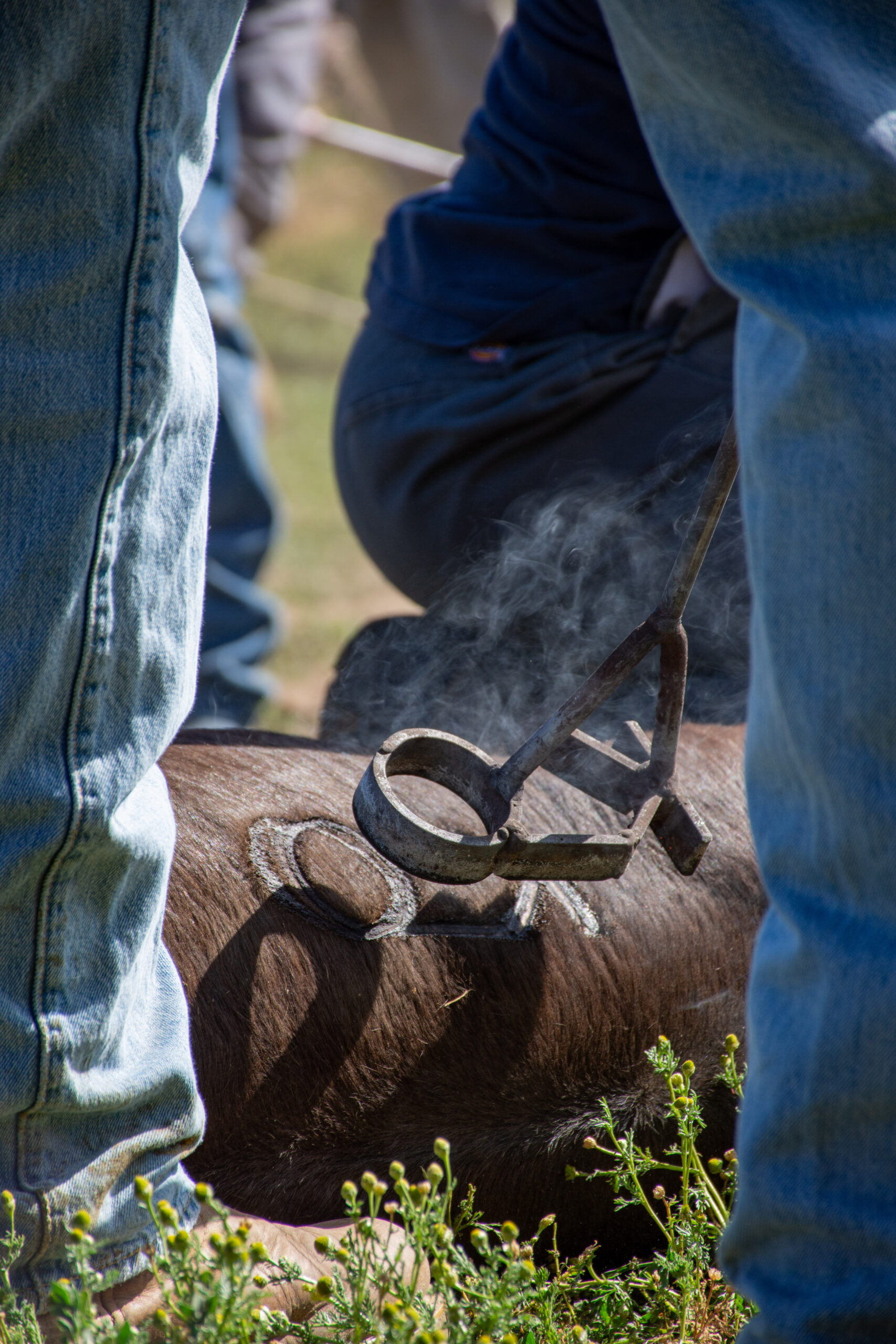
By: Christopher Dysinger
According to the Code of the West a man who has integrity is one who rides for the brand. If you are unfamiliar with cowboy parlance this phrase is used to describe being loyal to the outfit you work for. Cowboys were, “intensely loyal to the outfit they were working for and would fight to the death for it. They would follow their wagon boss through hell and never complain.” -Teddy Blue Abbot. Riding for the brand means being loyal and when I consider what it means to be loyal I am reminded of the words of the Lord Jesus to His disciples in Matthew 16:24, “Then said Jesus unto His disciples, If any man will come after Me, let him deny himself, and take up his cross and follow Me.” To me, to take up the cross and follow the Lord is the epitome of what it means to ride for the brand.
When you place your trust in the Lord Jesus you are signing on to His outfit, to speak the language of the West. When you called upon the name of the Lord Jesus by faith, He saved you and from this point you are riding for His brand. In taking up your cross and following Him you have pledged to be loyal, and this means you face any hardship or trial like a cowboy on the trail moving the herd. Any complaint must be swallowed in the same way you would swallow a cup of coffee. When I hear our faith and loyalty to the Lord Jesus put into these terms it stirs something within me that moves me to keep right on riding for the brand.
Louis L’amour wrote, “Riding for the brand was an expression of loyalty to a man’s employer or the particular outfit he rode for. It was considered a compliment of the highest order in an almost feudal society. If a man didn’t like a ranch or the way they conducted their affairs he was free to quit, and many did; but if he stayed, he gave loyalty and expected it. A man was rarely judged by his past only by his actions. Many a man who came west left things behind him he would rather forget, so it was not the custom to ask questions. Much was forgiven if a man had courage and integrity and if he did his job. If a man gave less than his best, somebody always had to pick up the slack, and he was not admired.” It is the same when a person gives his or her heart to Jesus.
When you come to the Lord Jesus you are not judged by your past. When you come to the Lord Jesus, repenting of sin and seeking forgiveness, everything from your past is left behind. All will be forgiven. 1 John 1:9 reads, “If we confess our sins, He is faithful and just to forgive us our sins, and to cleanse us from all unrighteousness.” When you place your faith in the Lord Jesus you are promising to be loyal and in return you will receive the same. He has promised that He will never leave us or forsake us. When you walk with the Lord Jesus through life you are indeed, “riding for the brand.”
“Riding for the brand” is not just an expression of loyalty nor is it just an expression of pride, it is also an expression of love. When a cowboy claims to be riding for the brand, he is telling any other outfit who may seek his loyalty, that he cannot give it, because he has given his word to another. It is the same when we pledge our faith and loyalty to the Lord Jesus. If any would call us away from Christ we cannot go, because we are riding for the brand.
The End
This article is an excerpt from the book, The Bible and the Code of the West by Dr. Christopher Dysinger.
Country Lifestyle
Farm Dogs & Table Scraps
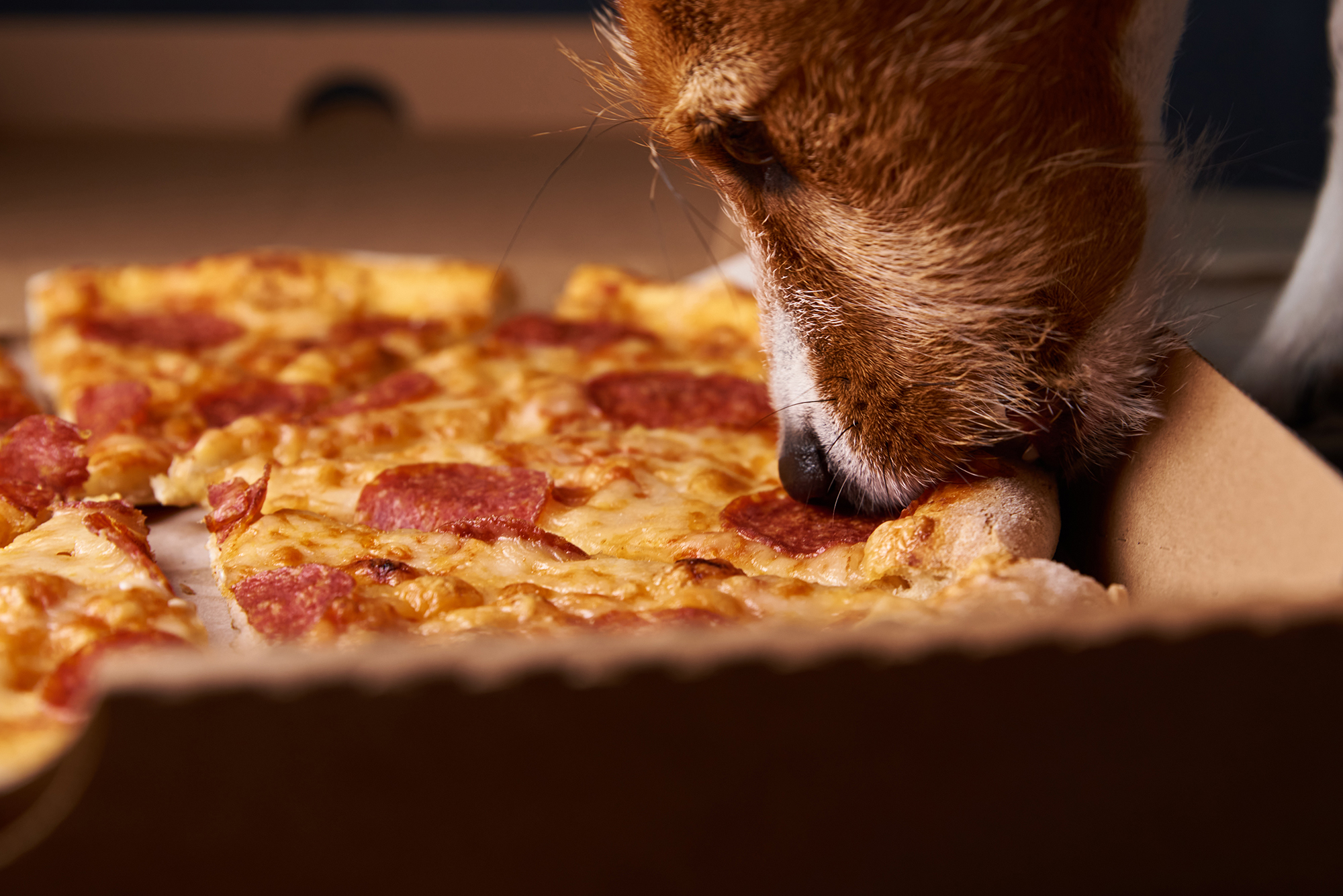
What’s Safe and What’s Not?
Growing up on a farm, our dogs were tough. They roamed the pastures, slept under the barn, and ate just about anything they could get their paws on—whether we meant for them to or not. I’ll admit, I never thought twice when one of our old cow dogs snatched a biscuit off the table or licked up a spill from the barn floor. I’ve even seen a dog steal a whole rib bone off a plate and trot off like he’d won the lottery. And somehow, they always seemed fine.
But here’s the thing—just because they survived doesn’t mean it was safe. For every farm dog that lucked out, there’s another that wasn’t so fortunate. Some human foods can be downright toxic to dogs, and a little bit of bad luck (or a smaller, more sensitive dog) can turn a harmless snack into an emergency.
Common toxic foods lying around the farmhouse
If you’ve got a farm dog—or any dog, really—you need to be aware of the dangers lurking in everyday foods. Some of the biggest culprits include:
Chocolate – The darker it is, the worse it is. Even a little can cause vomiting, seizures, or worse.
Grapes & Raisins – No one’s exactly sure why, but they can cause kidney failure fast.
Onions & Garlic – In large enough amounts, these can destroy red blood cells, leading to anemia.
Xylitol (Found in Sugar-Free Gum & Candy) – This artificial sweetener can send a dog’s blood sugar crashing and cause liver failure.
Alcohol – Even small amounts can be deadly to dogs, affecting their nervous system much more than it does ours.
Bones from Cooked Meat – While not necessarily toxic, they can splinter and cause serious internal injuries.
Macadamia Nuts – These can lead to weakness, vomiting, and even paralysis in dogs.
What to do if your dog eats something toxic
First, don’t panic—but don’t ignore it either. If you know your dog ate something dangerous, call your vet immediately. They can tell you whether to induce vomiting or if it’s something that requires urgent care. If it’s after hours, contact the ASPCA Animal Poison Control Center (888-426-4435) or the Pet Poison Helpline (855-764-7661).
Prevention is always the best medicine, so keep toxic foods out of reach. That might mean keeping the trash can secured, making sure kids don’t slip the dog a treat under the table, or just being more mindful of what’s left on the counter.
Our farm dogs might have been lucky, but luck isn’t a great strategy when it comes to their health. A little awareness goes a long way in making sure they stay happy, healthy, and ready for the next day’s work.
For more information
ASPCA Animal Poison Control: www.aspca.org/pet-care/animal-poison-control
Pet Poison Helpline: www.petpoisonhelpline.com
Visit www.akc.org/expert-advice/nutrition/foods-your-dog-should-never-eat
Country Lifestyle
Summer Squash and Corn Chowder
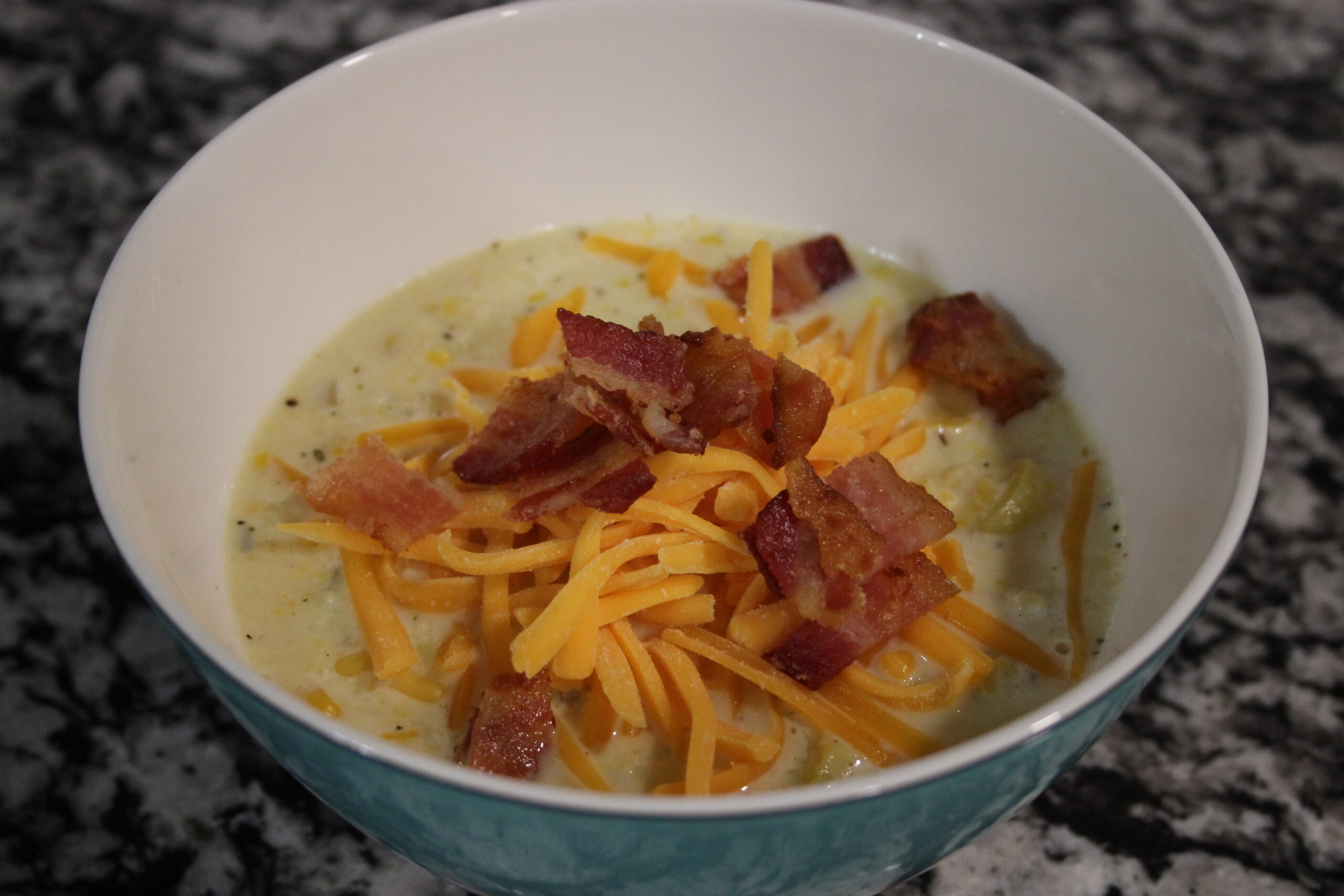
By Lacey Vilhauer
Total time: 40 minutes
Servings: 6-7
Ingredients
- 6 slices bacon, cooked and crumbled and 1 1/2 Tbsp rendered bacon fat reserved
- 1 1/2 lbs yellow squash, chopped (about 3 medium)
- 2/3 cup thinly sliced celery
- 1 cup diced onion
- 1 Tbsp flour
- 2 cloves garlic, minced
- 2 3/4 cup milk (I used 1%)
- 5 cups canned or fresh cut corn (from about 6 ears corn), divided
- 1/2 cup heavy cream
- 1 1/2 tsp chopped fresh thyme (or 1/2 tsp dried)
- 3/4 tsp salt, then more to taste
- 1/4 tsp freshly ground black pepper, then more to taste if desired
- 3/4 cup shredded cheddar cheese, for serving
- Chopped green onion for garnish (optional)
Instructions
Heat 4 tsp reserved bacon fat in a large pot over medium-high heat. Add celery and onion and sauté 2 minutes then add the squash.
Saute until tender, about 6 minutes, adding in garlic and flour during last 2 minutes of sauteing. Reduce heat slightly.
Add 1 1/2 cups milk, 2 cups of the corn, thyme, salt and pepper to the sauteed veggies.
To a blender add remaining 3 cups of corn, remaining 1 1/4 cups milk and the cream. Process in blender until nearly smooth (about 30 seconds).
Add pureed mixture to pot and stir to blend. Cook until mixture reaches a light boil.
Serve warm with shredded cheese, crumbled bacon and sliced green onions if desired.
-

 Attractions8 years ago
Attractions8 years ago48 Hours in Atoka Remembered
-

 Country Lifestyle10 months ago
Country Lifestyle10 months agoJuly 2017 Profile: J.W. Hart
-

 Country Lifestyle9 years ago
Country Lifestyle9 years agoThe House a Treasure Built
-

 Country Lifestyle4 years ago
Country Lifestyle4 years agoThe Two Sides of Colten Jesse
-

 Outdoors7 years ago
Outdoors7 years agoGrazing Oklahoma: Honey Locust
-

 Equine8 years ago
Equine8 years agoUmbilical Hernia
-

 Outdoors5 years ago
Outdoors5 years agoPecan Production Information: Online Resources for Growers
-

 Farm & Ranch7 years ago
Farm & Ranch7 years agoHackberry (Celtis spp.)

